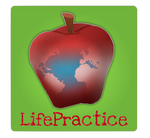 (he)art of teaching
(he)art of teaching From time to time, I receive questions about Project/Problem Based Learning implementation as teachers take their first tentative steps into a project, or even as this teacher has, gone full-time PBL in all of her classes! Kudos to this bold educator!
Question:
Is there an advantage or is it appropriate in PBL for me to research and share info? One of the students and I were talking about the Olympic flame and whether it “never goes out.” Neither of us had the definite answer but it was a topic that I wanted answered for myself but the answer was not vital to the project. My inclination is that I should research and share – to model enthusiasm for learning. Or is that something I should just have encouraged her to research and keep the info to myself? I’m not sure that I’m understanding PBL as well as I thought.
Answer: There are many flavors to PBL, so I always default to enthusiasm and Learning. So if you feel that you need to dig in and work alongside a kid, do it! I have. A lot. Doing so role models curiosity and, as you said, enthusiasm. Tell her you don’t know and that you’re going to look stuff up, too, and you’re looking forward to hearing what she has found. . If, once you get your heads back together, she has brought info back from your independent searches, you can feel confident to share the info you found freely, comparing notes, and giving TONS of high-fives and love. Such an awesome scenario!Be sure to have her share her info before you share yours. This will give you some options in case she hasn’t brought any research back. If she has found nothing and you’re guessing it was perhaps due to a lack of effort, then you can tell her that you’ve buried a lie or untruth in your information and she needs to find that lie or risk putting out some bad info. Plan the lie in advance in case you might need it.Or instead of a lie, or if you think that she has put effort in and simply wasn’t able to find the right places to look, drop her some good links to look at–ones that you know have the answers. Or hand her a book with a few encouraging words.In this way, she can still have success through her own effort and you’re still providing high-quality, student-centered learning by scaffolding and role modeling growth!
A mantra of mine comes from Dr. Sylvia Rimm: The surest path to high self-esteem is to be successful at something one perceived would be difficult. Each time we steal a student’s struggle, we rob them of an opportunity to build higher self-esteem. Students must experience success with difficult tasks to feel capable and competent.
The takeaway:
Kids who aren’t experienced being learners sometimes need a little extra love and support figuring out how to shift away from the role of Student (being told what-to, when-to, how-to) to the role of Learner (knowing how to suss out answers). And some kids who are great learners, but who have hit a sticking point in their work, might just need a little help getting unstuck.
Knowing how to balance it all is the (he)art of teaching.
Question:
Is there an advantage or is it appropriate in PBL for me to research and share info? One of the students and I were talking about the Olympic flame and whether it “never goes out.” Neither of us had the definite answer but it was a topic that I wanted answered for myself but the answer was not vital to the project. My inclination is that I should research and share – to model enthusiasm for learning. Or is that something I should just have encouraged her to research and keep the info to myself? I’m not sure that I’m understanding PBL as well as I thought.
Answer: There are many flavors to PBL, so I always default to enthusiasm and Learning. So if you feel that you need to dig in and work alongside a kid, do it! I have. A lot. Doing so role models curiosity and, as you said, enthusiasm. Tell her you don’t know and that you’re going to look stuff up, too, and you’re looking forward to hearing what she has found. . If, once you get your heads back together, she has brought info back from your independent searches, you can feel confident to share the info you found freely, comparing notes, and giving TONS of high-fives and love. Such an awesome scenario!Be sure to have her share her info before you share yours. This will give you some options in case she hasn’t brought any research back. If she has found nothing and you’re guessing it was perhaps due to a lack of effort, then you can tell her that you’ve buried a lie or untruth in your information and she needs to find that lie or risk putting out some bad info. Plan the lie in advance in case you might need it.Or instead of a lie, or if you think that she has put effort in and simply wasn’t able to find the right places to look, drop her some good links to look at–ones that you know have the answers. Or hand her a book with a few encouraging words.In this way, she can still have success through her own effort and you’re still providing high-quality, student-centered learning by scaffolding and role modeling growth!
A mantra of mine comes from Dr. Sylvia Rimm: The surest path to high self-esteem is to be successful at something one perceived would be difficult. Each time we steal a student’s struggle, we rob them of an opportunity to build higher self-esteem. Students must experience success with difficult tasks to feel capable and competent.
The takeaway:
Kids who aren’t experienced being learners sometimes need a little extra love and support figuring out how to shift away from the role of Student (being told what-to, when-to, how-to) to the role of Learner (knowing how to suss out answers). And some kids who are great learners, but who have hit a sticking point in their work, might just need a little help getting unstuck.
Knowing how to balance it all is the (he)art of teaching.



 RSS Feed
RSS Feed
